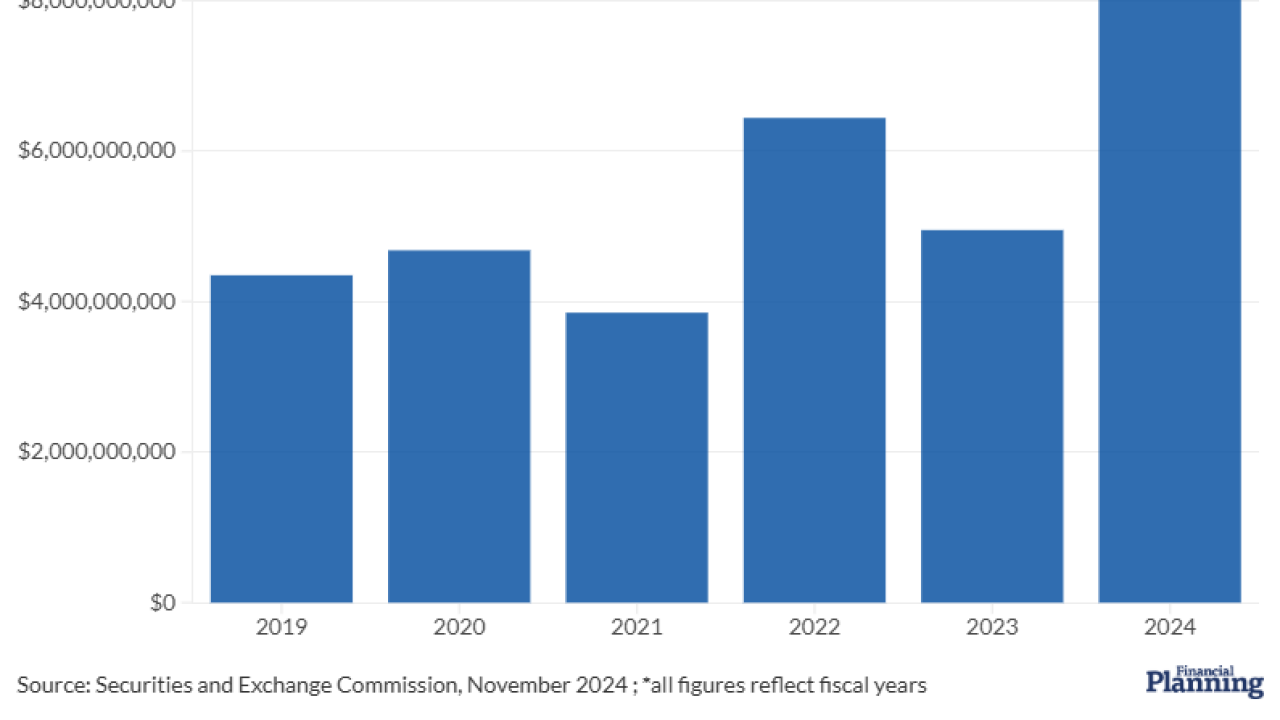WASHINGTON -- How will the sustained period of low interest rates affect retirement planning?
A forthcoming study from the Employee Benefit Research Institute (EBRI) attempts to quantify the very real effect that low interest rates and muted yields in certain asset classes could have on investors' ability to sock away enough to cover their retirement.
LOW RATES, LEAN RETIREMENT
"This low-interest environment has an extremely large impact on failure rates," EBRI research director Jack VanDerhei said at a policy forum event previewing the research.
In a scenario where retirement income and wealth account for 100% of an investor's simulated retirement expenses, VanDerhei's model projects that around a quarter of Baby Boomers and Gen Xers who would have had sufficient retirement income under interest rates at historical averages would run out of money if the current low rates were taken as a permanent condition.
VanDerhei acknowledges that that is a hypothetical -- and improbable situation -- and that the impact of low rates on an investor's retirement picture would be mitigated by other types of holdings. For instance, only 5% to 8% of the same Boomers and Xers would run out of money under perpetually low rates if income and wealth accounted for 80% or less of their retirement expenses, according to the EBRI model.
Further, VanDerhei noted that the effects of low interest rates are felt most dramatically among the top three quartiles of investors, with the less affluent more shielded from the effect of interest rates on bonds and other asset types with similar characteristics.
The upshot of EBRI's forthcoming study is a new metric VanderHei calls the Retirement Readiness Rating, which models the percentage of "simulated life-paths" that will not run short of money throughout retirement.
VanDerhei does not argue that historically low interest rates will torpedo investors' retirement savings, particularly given the safety net in place in the form of Social Security. Still, he warns that failing to account for low rates (along with other factors) could make for a more spare retirement.
"Given the impact of Social Security, most households are never going to run out of money," he said. "But they certainly could run short."
VanDerhei told Financial Planning that the EBRI report is expected to be finalized and publicly available within the next month.
INCOME ILLUSTRATIONS
Thursday's policy forum on retirement planning comes just a day after the Department of Labor issued a
The move drew praise from groups like the Insured Retirement Institute that stress the importance of educating employees about their retirement picture and how their plans work.
"One of the main challenges for today's workers will be making a lifetime of savings last throughout all their retirement years," IRI President and CEO Cathy Weatherford said in a statement in responding to the Labor Department's rulemaking proposal. "Providing such income illustrations will help them understand how much income can be generated from savings and adjust their savings and investment strategies accordingly so they can attain financial security during their retirement years."
PROFESSIONAL OVERSIGHT
For retirement-plan advisors and administrators, the forthcoming EBRI study offers the latest indication that they might consider taking a more active role in managing the positions held in the employer plans they oversee, according to Stacy Schaus, an executive vice president at PIMCO and leader of the firm's Defined Contribution Practice.
"We do believe that DC plans can be managed to reduce the risk of failure," Schaus said. "We believe in professional oversight to manage through different economic environments."
In that regard, the modern world of investing and planning for retirement bears a similarity to auto repair, Schaus suggested, noting that new cars rolling off the assembly line aren't designed for their owners to be able to perform what were once routine jobs like changing out a set of brake pads. Instead, cars -- and investments, if you follow the parallel -- have become so complex that even basic jobs typically require a trained mechanic with a shop and a set of specialized tools at his disposal.
"Investing is the same thing. I mean people can't do this on their own. They need -- they need -- much more professional oversight on all fronts," Schaus said.
In a recent survey, PIMCO polled consultants to retirement plans and found that respondents were bullish on emerging markets, which many said they expect to outperform other asset classes. In that survey, 94% of plan consultants said they are likely to add global fixed income strategies to strengthen their plans, while 85% said they were considering adding diversification strategies like investment-grade and high-yield holdings.
That puts a premium on the role of plan administrators, advisors and employers both to work with investors to draw out their objectives and, more importantly, take an active role in shaping the structure of the plan.
"It all starts with the design and then it's the communication out to the individual," Schaus said.
"The vast majority of people are going to be led to success or failure based on what the design is," she added. "Education is important, but it's the design that's even more important."





